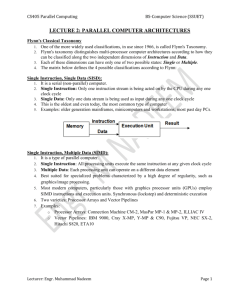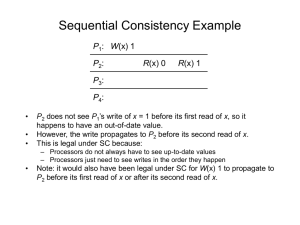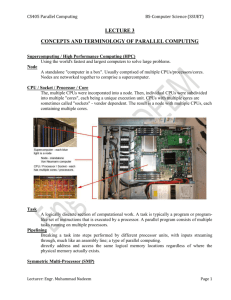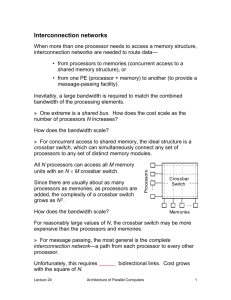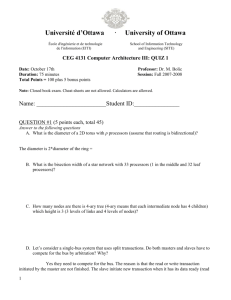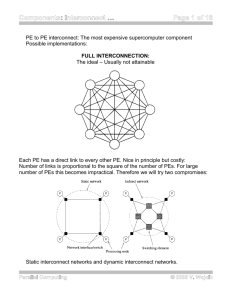Lecture 6 – Interconnection Networks
advertisement
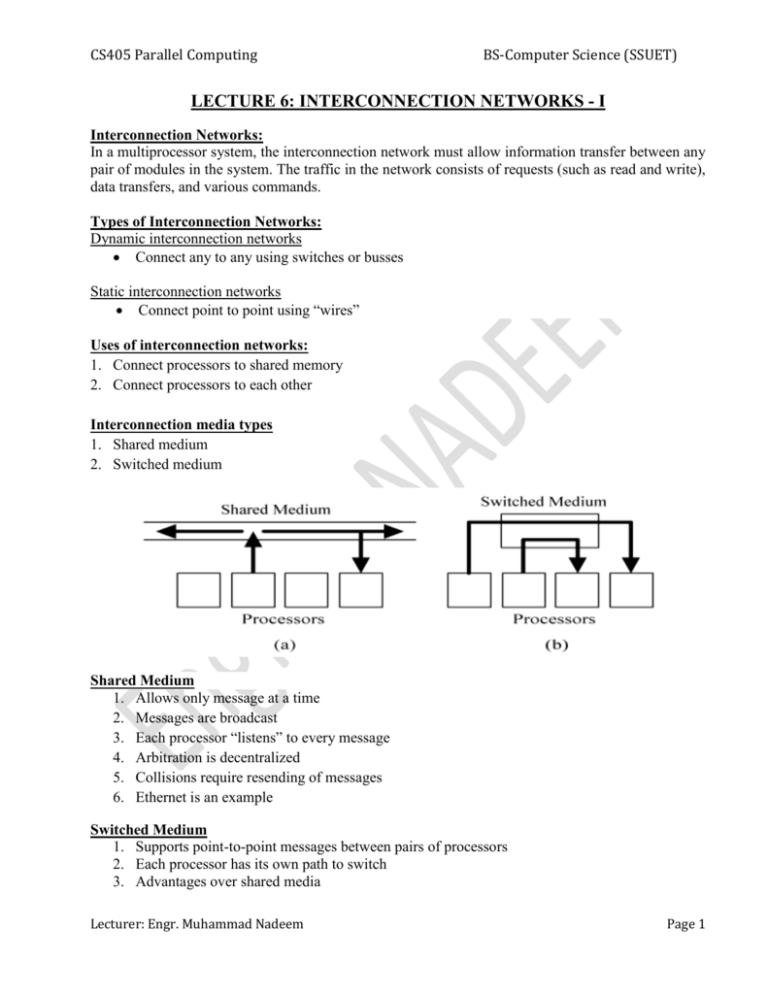
CS405 Parallel Computing BS-Computer Science (SSUET) LECTURE 6: INTERCONNECTION NETWORKS - I Interconnection Networks: In a multiprocessor system, the interconnection network must allow information transfer between any pair of modules in the system. The traffic in the network consists of requests (such as read and write), data transfers, and various commands. Types of Interconnection Networks: Dynamic interconnection networks Connect any to any using switches or busses Static interconnection networks Connect point to point using “wires” Uses of interconnection networks: 1. Connect processors to shared memory 2. Connect processors to each other Interconnection media types 1. Shared medium 2. Switched medium Shared Medium 1. Allows only message at a time 2. Messages are broadcast 3. Each processor “listens” to every message 4. Arbitration is decentralized 5. Collisions require resending of messages 6. Ethernet is an example Switched Medium 1. Supports point-to-point messages between pairs of processors 2. Each processor has its own path to switch 3. Advantages over shared media Lecturer: Engr. Muhammad Nadeem Page 1 CS405 Parallel Computing BS-Computer Science (SSUET) a. Allows multiple messages to be sent simultaneously b. Allows scaling of network to accommodate increase in processors Switch Network Topologies 1. View switched network as a graph a. Vertices = processors or switches b. Edges = communication paths 2. Two kinds of topologies a. Direct b. Indirect Direct Topology 1. Ratio of switch nodes to processor nodes is 1:1 2. Every switch node is connected to a. 1 processor node b. At least 1 other switch node Indirect Topology 1. Ratio of switch nodes to processor nodes is greater than 1:1 2. Some switches simply connect other switches BUS: 1. Bus-based networks are perhaps the simplest: they consist of a shared medium common to all nodes. 2. Cost of the network is proportional to the number of nodes; distance between any two nodes is constant O (1). 3. Ideal for broadcasting info among nodes. Lecturer: Engr. Muhammad Nadeem Page 2 CS405 Parallel Computing BS-Computer Science (SSUET) CROSSBAR NETWORK: 1. While the single bus can provide only a single connection, the crossbar can provide simultaneous connections among all its inputs and all its outputs. The crossbar contains a switching element (SE, also called a cross-point) at the intersection of any two lines extended horizontally or vertically inside the switch. 3. Simultaneous connections between Pi and Ms-i+1 are made. 2. 4. The number of SEs (switching points) required is 64 and the message delay to traverse from the input to the output is constant, regardless of which input/output are communicating. 5. In general for an N X N crossbar, the network complexity, measured in terms of the number of switching points, is O(N2) while the time complexity, measured in terms of the input to output delay, is O(1). Lecturer: Engr. Muhammad Nadeem Page 3 CS405 Parallel Computing BS-Computer Science (SSUET) MULTISTAGE NETWORKS: 1. Multistage interconnection networks (MINs) were introduced as a means to improve some of the limitations of the single bus system (to improve is the availability of only one single path) while keeping the cost within an affordable limit. 2. Such MINs provide a number of simultaneous paths between the processors and the memory modules. 3. A general MIN consists of a number of stages each consisting of a set of 2X2 switching elements. Stages are connected to each other using Inter-stage Connection (ISC) Pattern. 4. The figure shows how three simultaneous paths connecting the three pairs of input/output , , and can be established. It should be noted that the interconnection pattern among stages follows the shuffle operation. 5. In MINs, the routing of a message from a given source to a given destination is based on the destination address (self-routing). There exist log2N stages in an NXN MIN. 6. Example of MINs is the Omega Network Lecturer: Engr. Muhammad Nadeem Page 4
